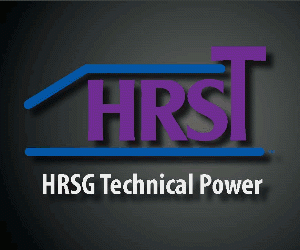Imagine putting your turbine back together after an outage only to find that you’ve lost 8 MW because the clearances were grossly out of spec. Or adding three days to the outage because someone didn’t check the capacity of the bearing repair shop. Or losing time because the lifting and laydown plan that worked flawlessly for a dozen previous outages isn’t effective for the current one because the scope expanded and laydown area was lost.
These and other situations can be avoided, said Greg McAuley, CTO, Turbine Repair & Support (TRS) Services, during an Oct 5, 2021 webinar, “Five ways to make or break your turbine outages,” by having an independent expert, a/k/a/ technical field advisor (TFA), help develop and implement the outage plan. In every step of the plan, McAuley advocates, “Ask what could go wrong and develop contingencies and options.”
Whose specs are referenced when the document says, “all clearances within spec”? Does the contractor provide evidence of experience in meeting the schedule? What do you do when you have an incapable crew onsite? Are the pre-bid work scopes vague and incomplete? Are you putting too much trust in what the OEM is telling you?
Make sure your plan follows a checklist and guidelines that are customized for your site, and accommodate current adverse factors (Covid, supply-chain issues, etc) which can affect parts and service availability, timing, delivery, etc. Don’t rely on “generic” checklists from the OEMs or assume that the upcoming outage will go just like the last one.
See contingency planning checklists in the sidebar for gas-turbine compressor and turbine sections, plus generators. McAuley also has developed checklists for safety, craft labor and engineering, logistics, etc. To get your copy, write gmcauley@trsglobal.com.
But even the best plan may get thrown out when the battle begins, so the saying goes. McAuley embraced the analogy of a football team’s offense built around a quarterback who gets injured during the first game of the season. That’s when it really helps to have someone onboard with deep outage experience and a network of resources to develop options on the fly.
In response to the question, “What controllable items unexpectedly extend outages in your experience?” McAuley gave the example of a contractor team which did not fully understand LOTO procedures; when the site had to unexpectedly turn the turbine lube-oil system back on to roll the rotor, the outage was prolonged an extra shift to train the team on those procedures.
Outage planning and implementing is aggravated today, McAuley notes, because sites push outages as long as possible, then take them all on top of each other, stressing all the OEMs and services firms.
McAuley began his presentation with a safety minute, but ended by cautioning that during recent work at a site, he observed that only 50% of the outage team was wearing safety glasses.
Contingency planning checklists
Compressor section
Inspection scope
Borescope service provider
Do we have the labor to assist?
Blending service provider
Thrust-bearing shim-grinding resource
Spare rotor availability
How do we deal with shim migration?
Blade/vane availability
Bleed-valve scope and who is responsible
What if I can’t remove all my borescope plugs?
Dry ice and/or heating resources for stator-vane removal
Vane pinning resources
Turbine section
Consumable hardware availability
What to do if my clearances are too tight or loose?
Exhaust static or flex seals
Exhaust cylinder or diffuser cracking: Weld procedures and welders
Spare rotor availability
Parts don’t fit
Parts found contaminated
Interstage-seal field-alignment issues (Siemens units)
Blending service provider
Bucket sequence chart availability
Fuel-nozzle flow-test results
Non-capital-parts condition
Generators
Test work scope
Test and inspection service provider
What if my field megger is low or grounded?
Wedge, blocking, and ties
Cooler gaskets
Cooler leaks
Alignment jacking fixtures
Bearing availability and repair resource





